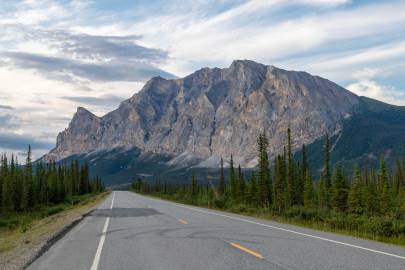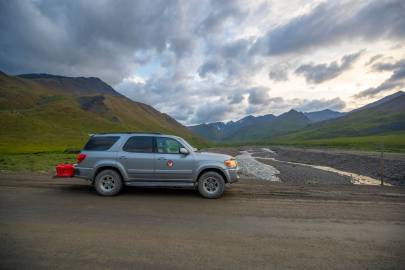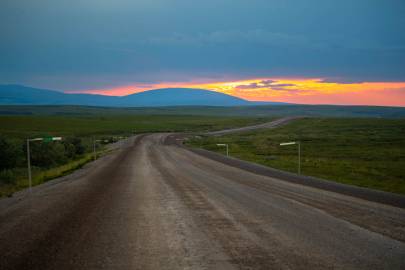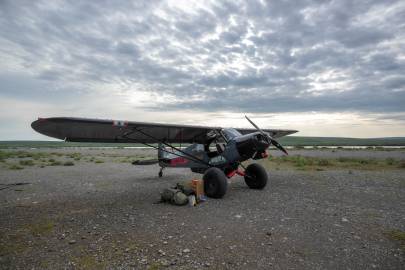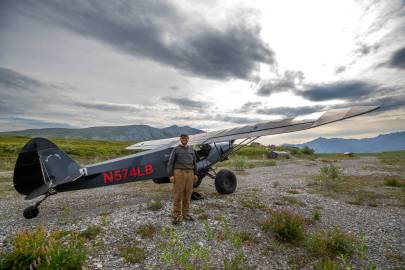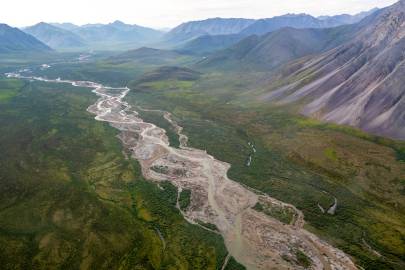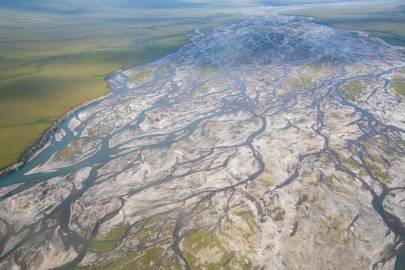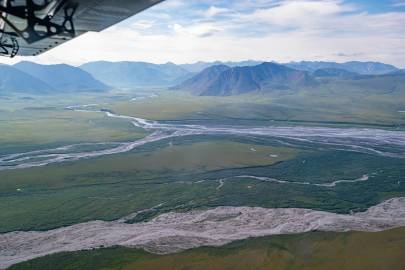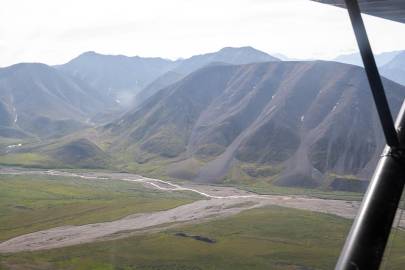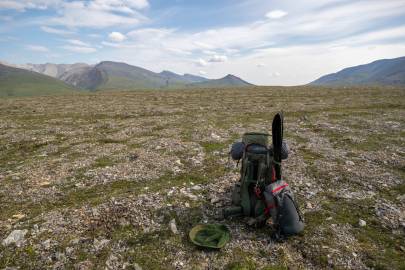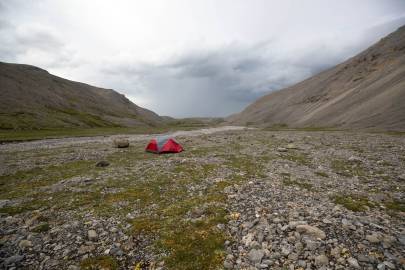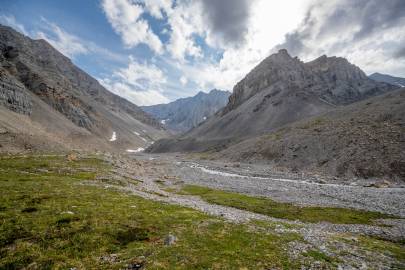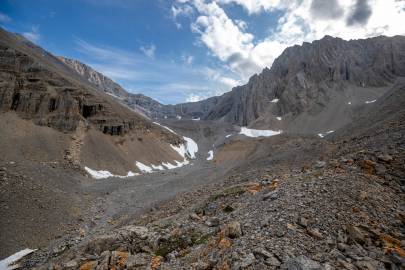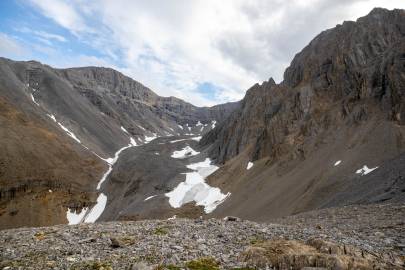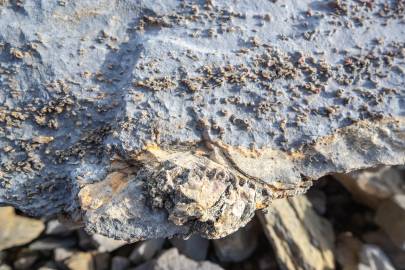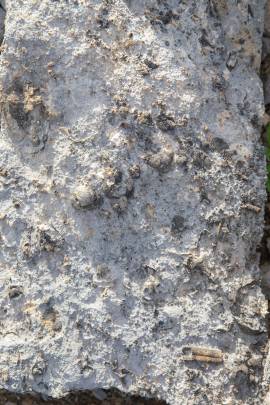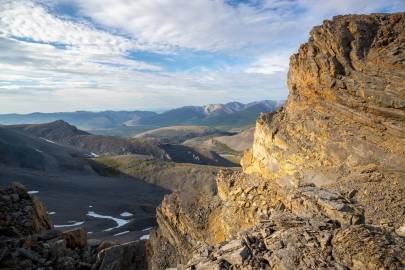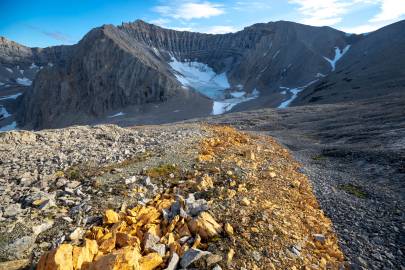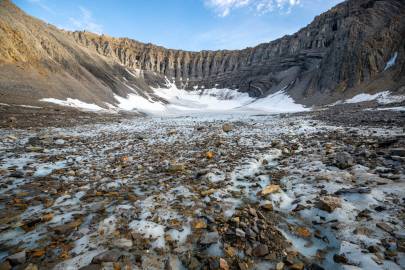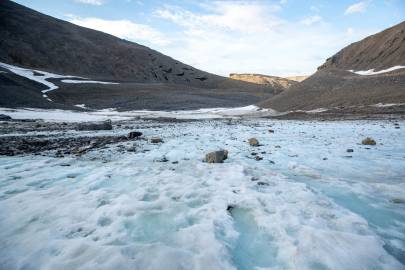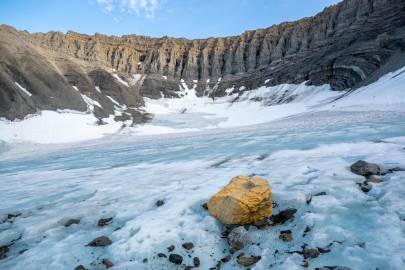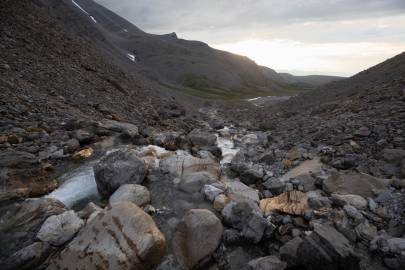It was foggy when I got woke up on July 20, 2023, and finished moving everything into the 2006 Toyota Sequoia. I felt a bit guilty driving a big SUV 800 miles north with only one passenger, especially when the point of the expedition was to document a glacier before it vanished from an accelerated demise thanks to global warming. But there was no way I was going to attempt the drive in a Civic and the Pilot was in no condition to make the drive to Fairbanks let alone the Haul Rd.
On the road just before 9am, and within a couple miles the fog broke, and it was a beautiful drive and great weather. It was fantastic weather the entire 16-hour drive over the Brooks Range and on to Happy Valley Airstrip. The last hour of the drive the sun hung at on the horizon just as my gas gauge neared empty. I pulled into Happy Valley, backed into a spot near the Silvertip Aviation base and then began to fold up seats and inflate my air mattress. I got everything situated for a comfortable last sleep before heading solo into the backcountry. All that was left to do was empty the four gas cans into the tank and relieve my bladder. I threw on my Gore-Tex jacket threw the hood up and then finished it off with my hat and bug net. I figure I averaged about 3 mosquitoes for every gas can made it up under my net and irritated the heck out of me while filling up. I didn't even bother to tie the cans back up. If someone wanted to steal them, I already got the gas I needed. It was almost 2am, I just wanted out of the mosquitoes and into bed, I didn't care.
